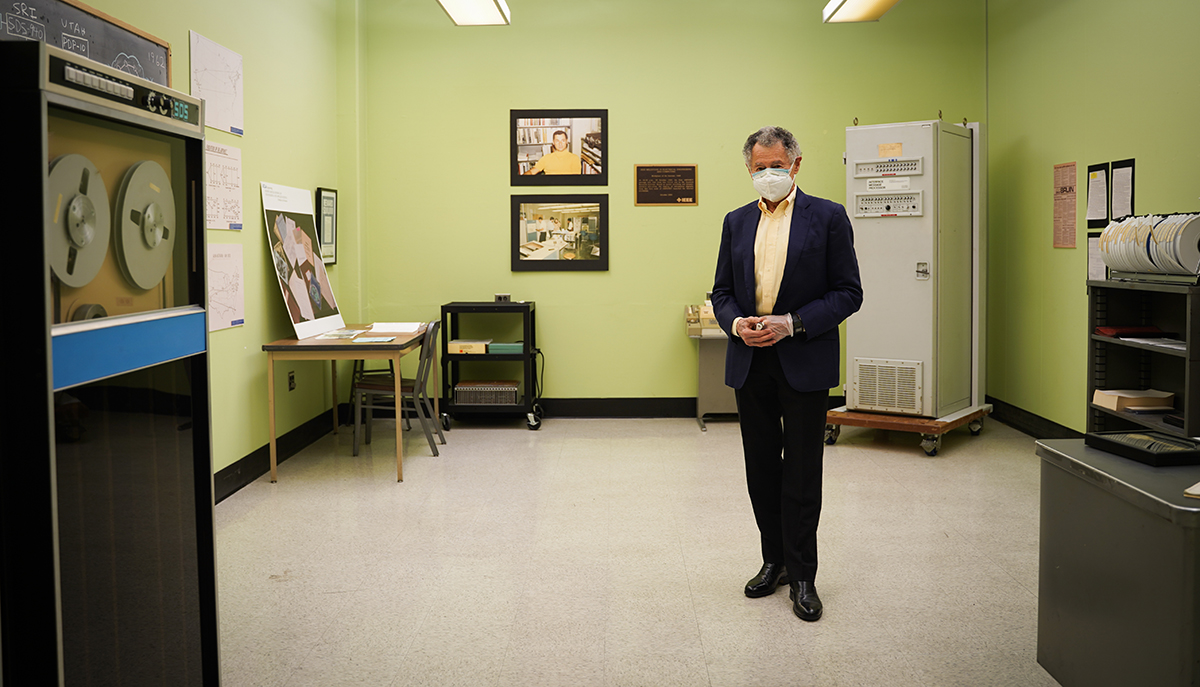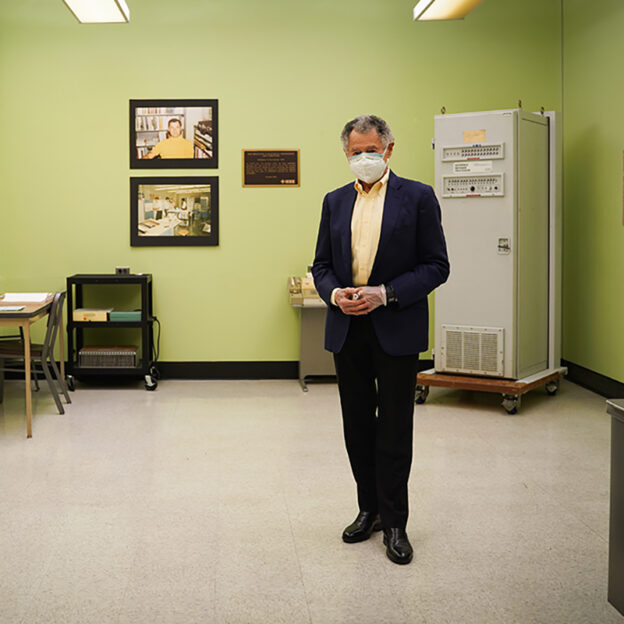On October 29, 1969, a group of UCLA researchers led by the young professor Leonard Kleinrock used a bulky machine called an Interface Message Processor, or IMP, to communicate with the Stanford Research Institute in Palo Alto. They sent the message via the Arpanet, a precursor of the Internet. The researchers meant to begin by typing “LOGIN,” but the system crashed before they could get to the third letter. So the very first Internet message turned out to be “LO,” as in “Lo and behold.” The room on campus from which Kleinrock and his colleagues sent the message, 3420 Boelter Hall, had been modified a fair amount in the intervening decades, but a few years ago a graduate student in history at UCLA, Brad Fidler, suggested to the engineering department that it consider re-creating it as it looked in 1969. The university gave him the go-ahead, and after landing contributions from Mark Cuban and Google’s Eric Schmidt, among others, and consulting with Sebastian Clough, director of exhibitions at UCLA’s Fowler Museum, Fidler restored a wall on one side of the room that had been taken down and decorated the space to match photographs from the 1960s. He set the IMP in one corner and, in another, placed a period desk topped by a rotary phone. UCLA now promotes the room as “the birthplace of the Internet.” In 2019, on the 50th anniversary of the communication with Palo Alto, Mayor Eric Garcetti presented Kleinrock with a key to the city. Kleinrock is shown during a visit to the room in early 2021. Photograph by Robert Park.

